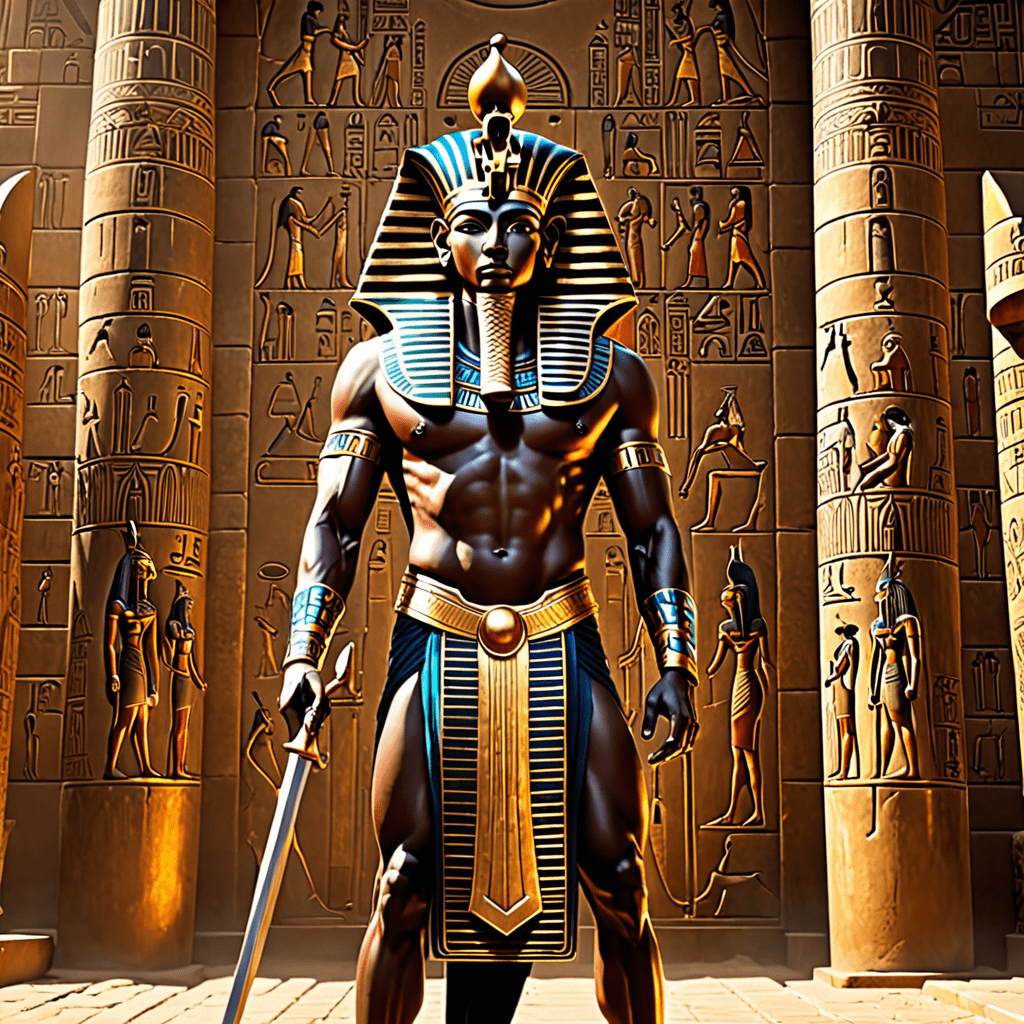Divine Interventions: Love Stories That Changed the Course of Legends
I. Introduction
Divine intervention is a concept found throughout mythology and folklore, where deities or supernatural forces intervene in human affairs, often to alter destinies or outcomes. These interventions can take many forms, from direct actions to subtle manipulations of fate. In the realm of myths, love stories frequently serve as pivotal moments that shape legends, often illustrating the powerful connection between human emotions and the divine.
This article aims to explore notable love stories influenced by divine intervention across various cultures and mythologies. By examining these narratives, we can understand how love transcends the human experience and interacts with the divine to create enduring legends.
II. The Role of Love in Mythology
Love has always been a driving force in myths and legends, acting as a catalyst for change and transformation. In many ancient narratives, love is intertwined with fate, often dictating the course of events and the destinies of characters.
Key aspects of love in mythology include:
- Motivation for Heroes: Many heroes embark on quests driven by love, whether it be for a partner, family, or community.
- Conflict and Resolution: Love often creates conflict, leading to dramatic tensions that require resolution through divine or heroic actions.
- Divine Influence: The gods frequently intervene in love stories, either to support or thwart relationships, reflecting the belief that love is a sacred force.
The intersection of love and fate often reveals the complexities of human relationships and the divine, showcasing how love can transform individuals and societies alike.
III. Greek Mythology: The Love of Orpheus and Eurydice
The tale of Orpheus and Eurydice is one of the most poignant love stories in Greek mythology. Orpheus, a gifted musician, fell deeply in love with Eurydice, a beautiful nymph. Their happiness was short-lived, however, as Eurydice was bitten by a snake and descended to the Underworld.
In his grief, Orpheus journeyed to Hades, where he played his lyre and sang of his love for Eurydice. Moved by his music, Hades and Persephone allowed him to take Eurydice back to the living world, but under one condition: he must not look back at her until they reached the surface.
Tragically, Orpheus could not resist and looked back, causing Eurydice to be lost to him forever. This story highlights divine intervention as both a gift and a test, altering the fates of both characters and demonstrating the profound impact of love and loss.
IV. Roman Mythology: Venus and Mars
In Roman mythology, Venus, the goddess of love, and Mars, the god of war, share a tumultuous relationship that significantly influenced Roman culture. Their love was characterized by passion and conflict, symbolizing the balance between love and war.
Key aspects of their relationship include:
- Influence on Battles: Their love was believed to affect the outcomes of battles, with soldiers invoking Venus for protection and favor.
- Symbol of Unity: Venus and Mars represented the union of opposites, illustrating how love can bridge differences.
- Cultural Legacy: Their relationship inspired art, literature, and various cultural practices, embedding them in the identity of Roman society.
The union of Venus and Mars serves as a reminder of how love can shape destinies and influence the course of history.
V. Hindu Epics: The Love of Rama and Sita
The love story of Rama and Sita, central to the ancient Indian epic Ramayana, exemplifies the ideals of love, duty, and righteousness. Rama, an incarnation of the god Vishnu, and Sita, his devoted wife, face numerous trials that test their love and commitment.
Divine intervention plays a crucial role in their story:
- Role of Deities: The gods intervene at various points, aiding Rama in his quest to rescue Sita from the demon king Ravana.
- Symbol of Dharma: Their relationship embodies the principles of dharma (righteousness) and devotion, serving as a moral compass for followers.
- Impact on Culture: The story of Rama and Sita has influenced countless generations, becoming a cornerstone of Hindu philosophy and cultural identity.
Their love story continues to inspire and instill values of fidelity, honor, and the divine connection between lovers.
VI. Celtic Legends: The Tragic Love of Deirdre and Naoise
In Irish mythology, the tale of Deirdre and Naoise is a tragic love story filled with themes of prophecy and fate. Deirdre, a beautiful woman prophesied to bring destruction to her kin, falls in love with Naoise, a young warrior.
Their love, however, is fraught with obstacles, primarily the wrath of King Conochbar, who desires Deirdre for himself. The story is marked by:
- Prophecy and Fate: The prophecy surrounding Deirdre’s birth sets the stage for her tragic destiny, intertwining love and foreboding.
- The Role of the Divine: Divine beings and fate manipulate the characters’ lives, leading them to inevitable tragedy.
- Exploration of Themes: Their story explores profound themes such as love, sacrifice, and the consequences of defying fate.
The tragic end of Deirdre and Naoise underscores the powerful connection between love and destiny in Celtic mythology.
VII. Native American Legends: The Love of the Sun and the Moon
The myth of the Sun and Moon’s love is a cherished narrative among various Native American cultures. This story symbolizes the balance of nature and the eternal relationship between day and night.
Key elements of this myth include:
- Cultural Significance: The Sun and Moon’s love represents the cycles of nature, teaching respect for the environment and its rhythms.
- Divine Teachings: Their relationship imparts lessons about harmony, balance, and the interconnectedness of all beings.
- Spiritual Legacy: This myth has endured through generations, serving as a reminder of the divine love that governs the natural world.
The love story of the Sun and Moon illustrates the profound connection between love, nature, and spirituality in Native American traditions.
VIII. African Folklore: The Story of Shango and Oya
Shango, the god of thunder, and Oya, the goddess of winds, represent one of the most dynamic love stories in African folklore. Their passionate relationship is marked by both harmony and conflict, reflecting the forces of nature they embody.
Aspects of their story include:
- Influence on Nature: Their love is said to influence weather patterns, representing the balance of power and nurturing.
- Human Affairs: The dynamics of their relationship affect human lives, symbolizing the interplay between love and the elements.
- Contemporary Legacy: Shango and Oya’s love continues to inspire contemporary African spirituality and cultural practices.
The legacy of their love story serves as a testament to the enduring power of divine relationships and their impact on the world.
IX. The Legacy of Divine Interventions in Love Stories
The exploration of love stories influenced by divine intervention across various cultures reveals the universal themes of love, fate, and the divine. These narratives not only entertain but also impart moral lessons, cultural values, and insights into the human experience.
Through these stories, we see:
- The Complexity of Love: Love is portrayed as a multifaceted force, capable of great joy and profound sorrow.
- Interconnectedness of Life: The divine often plays a role in human relationships, highlighting the interconnectedness of all beings.
- Cultural Heritage: These love stories contribute to the cultural heritage of societies, shaping identities and values across generations.
Ultimately, the legacy of divine interventions in love stories enriches our understanding of love’s power and its ability to



